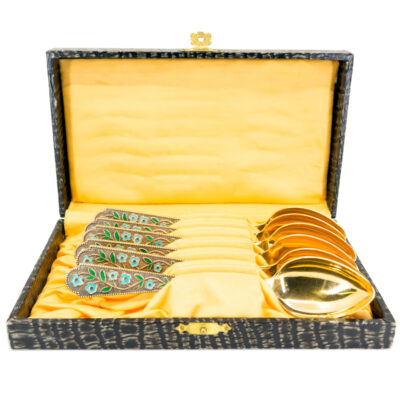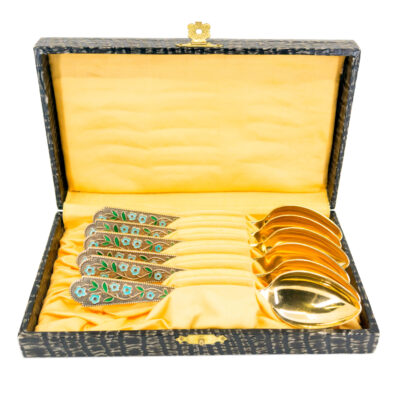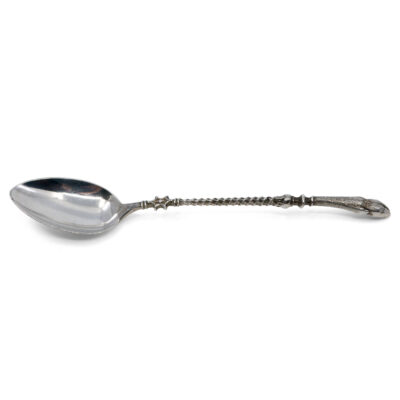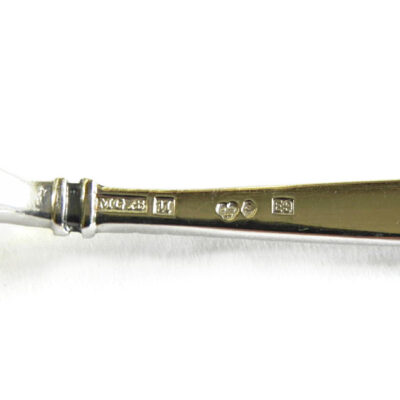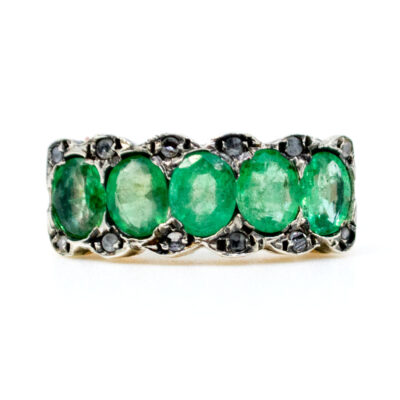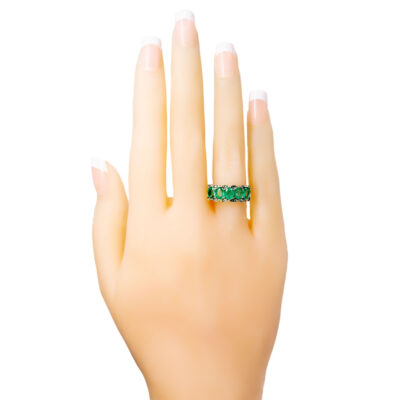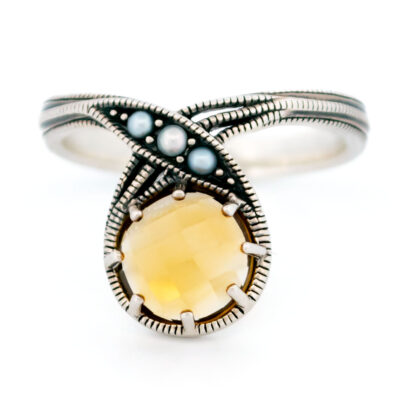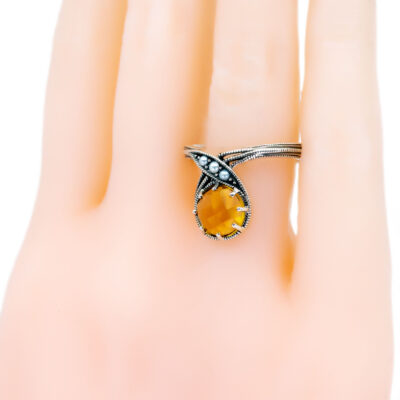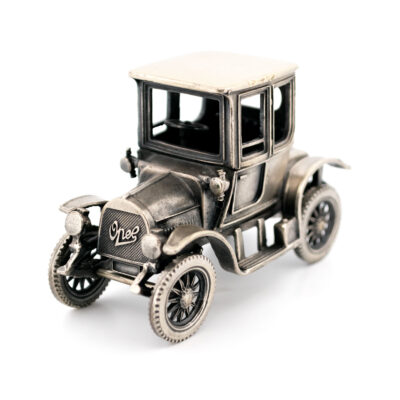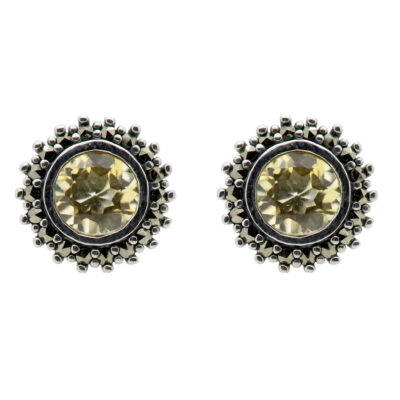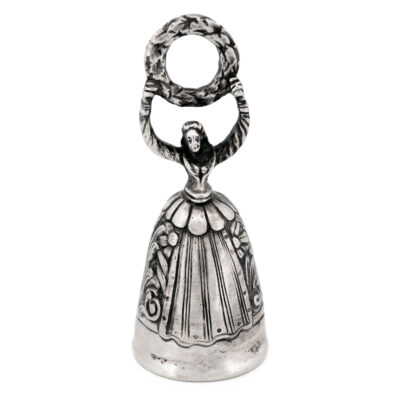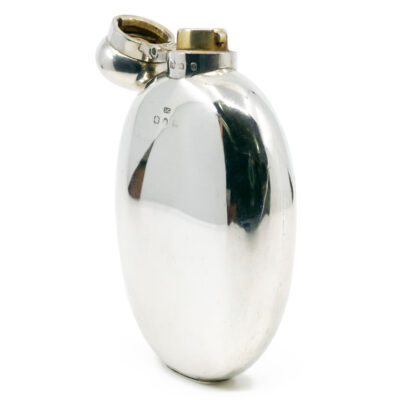This exquisite 1894 spoon set, crafted by Henry Atkin in Sheffield, is made of 925 sterling silver. Featuring a charming scalloped design, the set reflects the refined artistry of the Victorian era. Complete with its original fitted case, this antique silverware set is both a functional treasure and a collectible piece of history.
Videos
Details: Silver Spoon Set.
Dimensions: Spoon L: 11 x W: 2 cm.
Weight in grams: 103.
Condition: Excellent condition – barely used with minimal signs of wear.
Shipping and Pickup: This fine quality piece ships from our store located in the center of Amsterdam, The Netherlands. We offer both registered shipping and local pickup at our store. In the case of local pickup, any applicable shipping costs will be refunded.
About Us: Add some sparkle to your style with Binenbaum.com. We offer a stunning selection of antique and vintage jewelry that you won’t find anywhere else. From timeless rings and dazzling necklaces to unique brooches, we have something for every taste and occasion. Visit our website today and treat yourself to a piece of history.
| Design Era | |
|---|---|
| Design & Historical Context | The Late Victorian or Aesthetic period was a time of great cultural and artistic flourishing in Europe and the United States, and this was reflected in the jewelry of the time. The Aesthetic movement, which emphasized beauty and art for art's sake, was particularly influential on jewelry design during this time. Late Victorian or Aesthetic period jewelry is known for its intricate detailing and use of precious materials such as gold, silver, and diamonds. It often featured motifs such as flowers, animals, and nature scenes, and was inspired by a variety of cultural movements, including the Arts and Crafts movement, which sought to return to traditional craftsmanship and natural materials. One of the most distinctive features of Late Victorian or Aesthetic period jewelry is its emphasis on the use of enamel. Enamel is a type of glass-like material that is fused to a metal surface, and it was often used to add color and detail to jewelry. The French firm, Cartier, was particularly known for its use of enamel in its Late Victorian or Aesthetic period pieces. Late Victorian or Aesthetic period jewelry remains popular and is highly collectible to this day. It is often associated with the elegance and refinement of the time period, and is often seen as a symbol of wealth and sophistication. |
| Materials & Craftsmanship | Silver: The Metal of Elegance and Versatility Silver, known for its bright, reflective luster, is one of the most beloved and widely used precious metals in the world. This versatile metal has been cherished for thousands of years, not only for its beauty but also for its malleability, making it ideal for crafting intricate and delicate jewelry designs. Historically, silver has been associated with the moon and considered a symbol of purity, clarity, and protection. Ancient civilizations, from the Egyptians to the Greeks and Romans, valued silver for its beauty and used it to create coins, jewelry, and religious artifacts. In many cultures, silver is also believed to have healing properties, often used in amulets and talismans to ward off negative energy. In modern jewelry, silver is prized for its affordability, versatility, and timeless appeal. Sterling silver, an alloy of 92.5% pure silver and 7.5% other metals (usually copper), is the standard used in high-quality jewelry. Its durability and bright, reflective surface make it an excellent choice for a wide range of designs, from minimalist pieces to ornate creations. Silver can be polished to a high shine or given a matte, oxidized, or antiqued finish to suit various styles. Silver is more than just a metal; it is a symbol of elegance, flexibility, and understated luxury. Its enduring popularity and wide-ranging applications make it a staple in jewelry that can complement any look, from casual to formal, with timeless grace. |
| Dimensions | Spoon L: 11 x W: 2 cm |
| Gender | |
| Weight (in grams) | 103 |
| Condition | Excellent condition – barely used with minimal signs of wear |
By following these tips, you can enjoy your precious jewelry for many years to come.
Related Products
-
Enamel Silver Cloissoné Spoon Set 11790-2853
€ 895,00 VAT incl. (where applicable) -
Silver “Demitasse” Spoon Set 8822-2634
€ 695,00 VAT incl. (where applicable) -
Silver Antique Spoon Set 7913-2892
€ 450,00 VAT incl. (where applicable) -
Silver Markströms Guldsmeds Spoon Set 7879-2498
€ 695,00 VAT incl. (where applicable) -
Diamond Emerald Silver 9k Row Ring 17925-9333
€ 1.395,00 VAT incl. (where applicable) -
Citrine Pearl Silver Crossover Ring 17354-1550
€ 175,00 VAT incl. (where applicable) -
Silver “Opel Oldtimer” Miniature 17508-3229
€ 1.195,00 VAT incl. (where applicable) -
Citrine Marcasite (Pyrite) Silver Stud Earrings 17149-2870
€ 125,00 VAT incl. (where applicable)
- Home
- Collection
- Fine Jewelry
- Silver Jewelry
- Silverware
- Boxes
- Candlesticks
- Salt and pepper shakers
- Miniatures
- Salt cellars
- Spoon Set
- Condiments
- Frames
- Napkin Ring
- Spoon
- Oddities
- Cups
- Vases
- Cutlery
- Serving Spoon And Cake Server
- Candlesticks
- Baskets
- Hanukkiah
- Spice Tower
- Yad
- Tea Set
- Sugar Castor
- Napkin Rings
- Wine Bottle Coaster
- Wine Stopper
- Tea Pot
- Jugs
- Rattles
- Hip Flask
- Miscellaneous
- Rings 💍
- About
- Contact
- No products in the cart.




